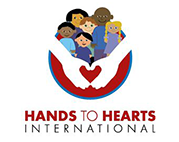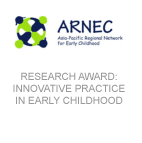By Liz Grover
Communications Officer
Hands to Hearts International
My name is Liz Grover and over the past 6 months I have worked as a communications consultant for Hands to Hearts International. My time with HHI is now ending and I’m on to new projects and places, but I must say that It’s been a very educational and interesting experience for me.
I have spent the past 12 years of my life consulting for non-profits and activist movements worldwide; from organizing people to stand up to corporate polluters in the USA, to organizing media tools for elections in war-torn countries, I’ve seen just about all of it. The joy of witnessing so many organizations and meeting so many change-makers is that I get to take pieces of their lessons and use them for my own puzzle of what sustainability means. What really stood out for me the most with HHI is the concept of women village leaders and I like this for several reasons:
1) Women’s Empowerment
I really believe that once you give a woman an inch, she will turn it into a mile. I see this happen with HHI which is constantly training women how to properly nurture and love their babies, and those that they care for (1,691 women trained to date). Not only has HHI reached over 14,269 children through these women, but these women know that they are changing their communities for the better. Just imagine how many of those women spread their knowledge to other women in their own village. It just makes me think of a small stone dropped in a pond and all the ripples that grow from it.
2) The Power of Village Leaders
One of the biggest, most costly mistakes that I’ve witnessed in many countries is that foreign aid does not support capacity building of local people to carry out relief/aid/reparation work. Many times it will send foreign consultants into impoverished nations and go without teaching the local people how to spread their efforts. For example, I have seen elections in certain countries where thousands of internationals are sent in to do the job, again, without capacity building among the locals. Four years later when it’s time for another election, the foreigners have to be brought in again since the local people aren’t as understanding of the process. This costs additional millions and it leaves the locals feeling powerless since they have to rely on foreigners to run their eletion.
HHI provides a healthy and more realistic solution to this problem since its focus is on using localized master trainers who use the tools from their own culture (including language, games, songs and dance) to train others with HHI’s message of healthy child development. That’s where its capacity building shines. For example, someone who lives in the Indian state of Kerala would most likely speak Malayalam. Therefore, HHI sends a master trainer who speaks that language and understands the cultural norms in the area of Kerala where she trains. Local people will be more open to her, meaning that she can work much faster since she doesn’t have to take the time to translate or learn different cultural ideas. This meaningful use of time results in a more cost efficient program.
3) Reaching Humans During Their Most Important Development Stage: 0-5 Years Old
I really appreciate how HHI reaches children at such a young age. In my own studies of human conflict and trauma, many things tend to stem from early childhood. People, many times unknowingly, carry the trauma of early life situations way into their adult lives. They carry the negativity from their childhood as they interact with others. Again, this is a ripple effect, but in a bad way. HHI’s focus on child development can transform the ripples into positivity by giving children loving and nurturing experiences that they can take with them for the rest of their lives. Just imagine how different the world would be if everyone had a positive start of love and happiness; it would be a different place.
These are the lessons of sustainability that I have taken from HHI. It’s been a blessed experience that has helped me to open up to more ideas of what it takes to change the world and I hope that more and more people understand why HHI’s work is a part of the solution to the root of many global problems. It’s a remedy to many disastrous situations, changing despair into hope for many children.









